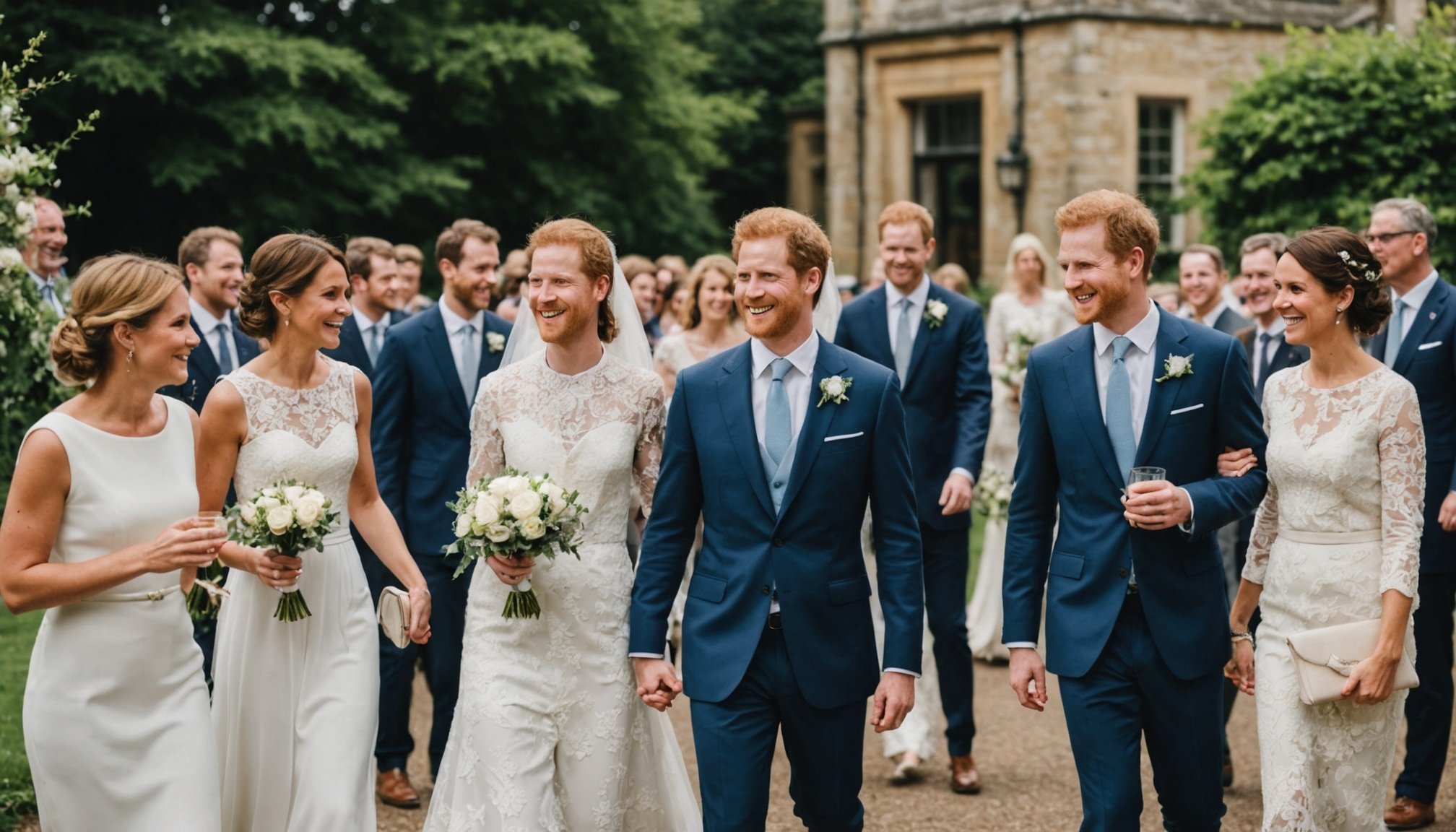Historical Context of Wearing White at Weddings
Throughout wedding history, the white attire trend holds deep significance. White dresses, now synonymous with Western ceremonies, were popularized by Queen Victoria in 1840, marking a pivotal milestone. This romantic fashion choice symbolized purity and innocence, gradually embedding into wedding traditions.
While Western weddings adopted white as standard attire, diverse cultural nuances shaped its perception globally. In China, red attire traditionally symbolized luck and prosperity, contrasting Western customs. The journey of white attire origins also carried cultural overtones; for instance, in Japan, white signifies the bride’s desire to be with her future spouse.
In parallel : Unveiling the Timeless Charm of the Christian Signet Ring
Cultural variations further depict white’s unique evolution. In African weddings, colourful fabrics and patterns often take precedence over white, emphasizing familial and cultural pride. Today’s brides may choose white to reflect personal taste or adhere to familial norms, showcasing the continuing influence of historical cotton candy-like charm.
Understanding these landmarks helps decode the widespread, yet not universally adopted, tradition of donning white. Each era and culture add layers of meaning, enriching the ceremonial fabric of weddings worldwide.
Topic to read : Step smoothly: the ultimate guide to stylish and comfortable heels for cobblestone streets in the uk
Etiquette Guidelines for Wearing White
Understanding wedding etiquette around white attire is crucial to avoid unintended faux pas. Traditionally, wearing white to a wedding is reserved for the bride, adhered to as a sign of respect. However, social norms have gradually softened, allowing guests to don white under specific conditions. If invited to wear white, choose subtle hues or patterns to differentiate from the bride’s ensemble.
Proximity and Family Dynamics
Proximity to the bride often dictates what you can wear. Close family members might follow a coordinated colour scheme, yet wearing white remains sensitive. Here, a tactical decision—involving the bride’s preferences—guides attire choices. Missteps surface when assumptions bypass these critical dialogues, especially within tightly-knit relationships. White dress code nuances emphasize clarity with brides, preserving harmony on the big day.
Misconceptions about White Attire
Misunderstandings often arise, prompting myths, like “only bridesmaid dresses must align with the wedding palette.” Yet, guests may appropriately incorporate white in their elegant attire choices, if done discreetly. Wedding etiquette underscores: balance pristine whites with complementary colours, always considering the bride’s wishes.
Dos and Don’ts of Wearing White
Navigating wedding do’s and don’ts around white attire can be tricky. Understanding key principles ensures respectful and elegant choices.
Key Do’s
- Do consult with the bride or wedding planner about the suitability of wearing white. Direct communication helps prevent misunderstandings.
- Do choose subtle white clothing, incorporating pastel shades or accents, maintaining a respectful tone.
Major Don’ts
- Don’t opt for styles that could rival or overshadow the bride’s ensemble. Avoid extravagant designs or head-to-toe white, which might breach fashion rules.
- Don’t assume white attire is appropriate without prior consent, especially in culturally diverse weddings where white carries different meanings.
Respectful Engagement
Engage openly with the bride regarding attire preferences, showing consideration for their vision. By respectfully aligning with the wedding’s ethos, potential faux pas are avoided and harmony retained.
Mindfully selecting white clothing involves balancing personal style with atmosphere sensitivity, understanding unwritten white clothing tips in various wedding contexts.
Regional Nuances and Cultural Considerations
When it comes to wearing white at weddings, regional customs and cultural etiquette within the UK offer a diverse perspective. The perception of white attire varies significantly across regions depending on local traditions. In some areas, traditional UK wedding traditions still hold that white is reserved exclusively for the bride, while in others, more contemporary attitudes allow for white accents or clothing under certain contexts.
Cultural sensitivity is paramount, especially in diverse ceremonies. It’s crucial to consider cultural etiquette, as wearing white could unintentionally clash with customs or signify different meanings. For example, in South Asian weddings, vibrant colours are the norm, and white might symbolize mourning.
Understanding regional customs can guide clothing choices. In Scotland, wearing a family tartan might be more appropriate, while in the south of England, a classic white suit may be perfectly acceptable for guests. Awareness and respect for these nuances are essential for ensuring harmony and respectfulness at the event. By considering these factors, attendees can honour both personal style and the couple’s cultural framework.
Style Tips and Accessorizing
When choosing wedding styling for white attire, understanding the right style and fit is vital. Opt for silhouettes that flatter your figure while maintaining elegance. Fabrics like chiffon, lace, or silk ensure sophistication without upstaging the bride.
Accessorizing White
Accessorizing white outfits requires care not to overshadow the bride. Choose subtle yet chic embellishments. Consider metallic tones like gold or silver to add a touch of glamour without overpowering the ensemble. Footwear and clutches in pastel shades can enhance your attire tastefully.
Fashion Advice
Stick to accessories that echo fashion advice in keeping with the event’s tone. Avoid excessive jewellery; instead, select statement pieces that lend charm while keeping a harmonious balance. For outdoor weddings, consider hats or fascinator-style headpieces in understated hues. Layer with a light shawl or stole for practical warmth and style.
Lean towards fabrics and cuts that complement the formality of the wedding setting—be it a formal ballroom or a rustic garden. Varied wedding settings demand thoughtful choices, ensuring your appearance is appropriate, graceful, personal, yet considerate of bridal norms.
Practical Scenarios and Examples
When contemplating wearing white to a wedding, consider various wedding examples to anticipate potential outcomes. Take the scenario where a guest chooses a white ensemble for a friend’s wedding without prior consultation. Such a decision might unintentionally divert attention from the bride, creating an uncomfortable situation for all involved.
On the other hand, think about a scenario where scenario analysis is applied correctly. Suppose a guest communicates with the bride beforehand, confirming that white is acceptable due to a contemporary theme. Here, the white attire aligns seamlessly with the overall aesthetic, enhancing the event’s visual harmony.
Real-life wedding examples further illustrate the importance of thoughtful attire choices. In one instance, a guest mistakenly wore a white gown to a culturally diverse wedding, clashing with local customs and causing unease. The lesson here emphasizes the need for cultural awareness and respect for traditions.
Real-life applications of such thoughtful planning provide insights into making appropriate attire decisions, ensuring that styling choices reflect both personal taste and wedding etiquette. By learning from these scenarios, guests can honour the celebration while maintaining personal dignity and respect for the couple’s vision.
FAQ: Common Concerns Related to Wearing White
Navigating the wedding FAQ regarding white attire can be intricate. Many attendees question, “Is it ever okay to wear white to a wedding?” The fundamental rule remains that white is traditionally reserved for the bride. However, exceptions exist, primarily when explicitly encouraged by the couple. Asking the bride directly clears any attire concerns and secures assurance.
Another common question pertains to accenting with white. When using white accessories or patterns, ensure they don’t outshine the bride’s ensemble. Opt for subtlety as a guiding principle, integrating white in moderation or as secondary features is typically more acceptable.
Conversations around attire choices often touch upon the fear of committing a faux pas. The solution? Engage in open dialogue with the bride to discuss options candidly. Here, transparency aids in aligning with the couple’s wishes and understanding any unique attire preferences they may have.
Finally, for guests in doubt, consulting wedding planners for their input can offer additional clarity. Such strategies prevent misunderstandings and foster an enjoyable celebration for all involved.











